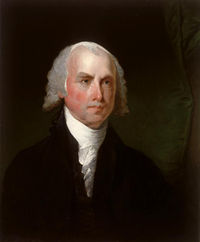For the previous entry in this series, click here.
A year after Verrazzano completed his reconnaissance of the North American coast, another European explorer, Estevao Gomes -- a Portuguese mariner commanding a Spanish expedition -- retraced part of his route. In 1525 Gomes sailed up the coast of New England and ascended a waterway he called the Rio de Santa Maria, later known as the Penobscot River. At the head of navigation, near present-day Bangor, Gomes and his men encountered a large party of Penobscot Indians, some of whom the explorers enticed aboard their ship and captured. Like his Spanish contemporaries in the West Indies, or like the Corte-Reals a quarter-century earlier, Gomes hoped to make his expedition profitable by enslaving and selling Indians. He made the mistake, however, of bringing his Penobscot captives back to Spain, where royal and noble opinion had turned against Native American slavery.
Fifty-eight Penobscots survived the ocean crossing to La Coruna in the summer of 1525. When Gomes attempted to sell the captives to Spanish merchants, the Crown seized them, baptized them, nominally freed them, and turned them over to royal guardians. Some promoters of Spanish settlement trained three of the captives as translators, in case Spain should wish to colonize present-day Maine, but nothing came of this venture. The rest became their guardians' servants, not quite slaves but certainly not free to find their own employers or leave the country. It is unlikely any ever made it home. (David Quinn,
North America, 160-162.)
The Verrazzano and Gomes expeditions proved to Europeans that North America was a large continent that extended continuously from the Tropics to the Arctic Circle. Yet European explorers continued to search for the elusive Northwest Passage, which some believed they could reach via the Strait of Belle Isle between Newfoundland and Labrador. In 1534 the French navigator Jacques Cartier, commanding three ships that carried enough provisions for a trip to China, sailed through the Strait and explored the coasts of western Newfoundland and eastern Labrador. He then crossed to Prince Edward Island and the Gaspe Peninsula, where he met several hundred Micmacs and Hurons who had come to the Bay of Chaleur to fish. Cartier and his men traded with the Indians and captured a Huron chief, Donnaconna, who had come to warn the Frenchmen off; they subsequently released Donnaconna but arranged to take two young Huron men, Domagaya (the chief's son) and Taignoagny, back to France to serve as translators. The explorers and their Indian companions (one might say hostages) returned to St. Malo that September.
By 1535 the two translators had learned enough French to provide Cartier with information about the Saint Lawrence River, which he ascended during his second voyage to America later that year. Domagaya and Taignoagny accompanied Cartier back to Canada on that expedition, during which the Frenchmen discovered and described the Iroquois town of Hochelaga (present-day Montreal), endured a cruel winter on the Saint Charles River, and succeeded in kidnapping Donnaconna and several of his kinsmen. The expeditionaries returned to France in July 1536, accompanied by the chief and the two former translators. (ibid, 169-181.)
Donnaconna remained in France and informed Cartier and the French court that the St. Lawrence Valley was rich in gold and gems, a story that inspired an unsuccessful French attempt to establish a colony in Canada in 1541. The chief himself died sometime between 1536 and 1540, and David Quinn suggests that he was killed by "good living." (181) There was certainly much of that in mid-16th-century France, where wages were high and food was ample; in 1560 a Norman squire reported that "In my father's time, we ate meat every day, dishes were abundant, we gulped down wine as if it were water." (quoted in Fernand Braudel,
Civilization and Capitalism, 15th-18th Century, Volume I: the Structures of Everyday Life [Berkeley: University of California Press, 1992], 195.) It is also quite possible, however, that Donnaconna died of disease -- perhaps the plague, which recurred with distressing frequency in 16th-century France. (ibid, 84.)
For the next entry in this series, click here.
